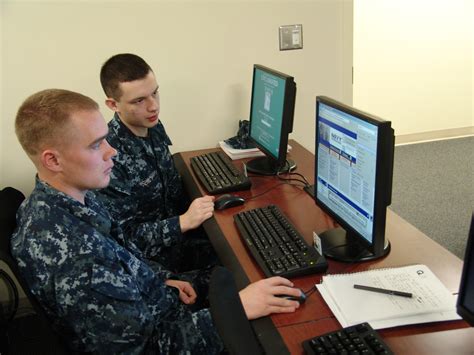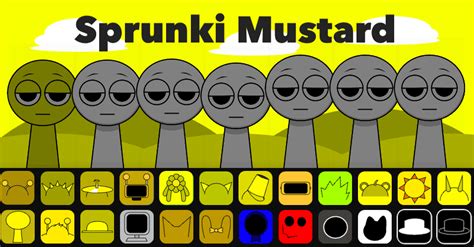NATO Phonetic Alphabet Code: Clear Communication Made Easy
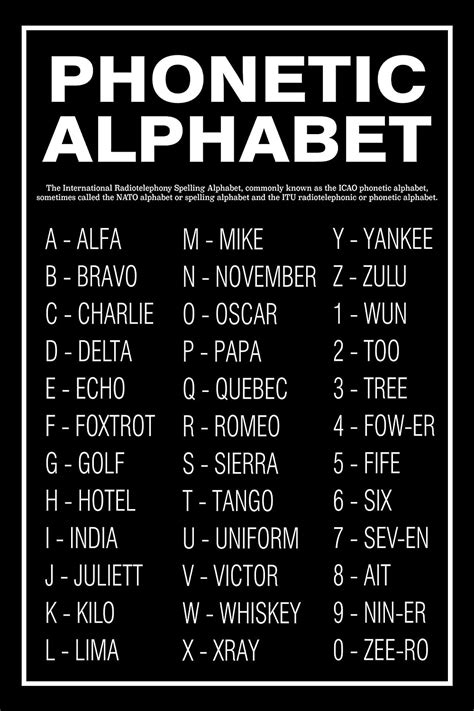
Understanding the NATO Phonetic Alphabet Code
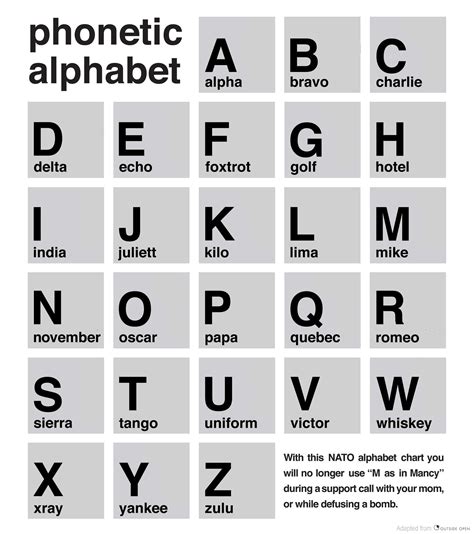
Effective communication is crucial in various fields, including aviation, navigation, and international business. However, standard letter pronunciation can lead to confusion, especially in situations where clear communication is vital. To address this issue, the North Atlantic Treaty Organization (NATO) developed a phonetic alphabet, also known as the NATO phonetic alphabet code or the International Radiotelephony Spelling Alphabet. This code assigns specific words to each letter of the alphabet, allowing for clear and accurate communication over radio, phone, and other communication systems.
Why is the NATO Phonetic Alphabet Code Important?
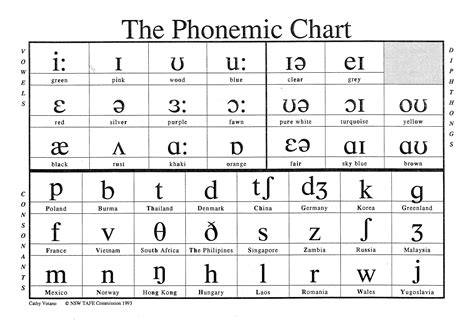
The NATO phonetic alphabet code plays a significant role in various industries and situations where clear communication is essential. Some of the key reasons why this code is important include:
- Avoiding Confusion: Standard letter pronunciation can be unclear, especially in noisy or low-bandwidth communication systems. The phonetic alphabet code eliminates confusion by assigning a unique word to each letter.
- Ensuring Accuracy: The code ensures that messages are conveyed accurately, reducing the risk of errors or misinterpretation.
- Enhancing Safety: In critical situations, such as aviation or navigation, clear communication is vital for safety. The phonetic alphabet code helps prevent accidents caused by miscommunication.
The NATO Phonetic Alphabet Code
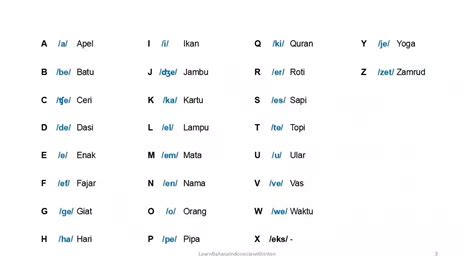
The NATO phonetic alphabet code consists of 26 words, each corresponding to a letter of the alphabet. Here is the complete code:
| Letter | Phonetic Word |
|---|---|
| A | Alpha |
| B | Bravo |
| C | Charlie |
| D | Delta |
| E | Echo |
| F | Foxtrot |
| G | Golf |
| H | Hotel |
| I | India |
| J | Juliet |
| K | Kilo |
| L | Lima |
| M | Mike |
| N | November |
| O | Oscar |
| P | Papa |
| Q | Quebec |
| R | Romeo |
| S | Sierra |
| T | Tango |
| U | Uniform |
| V | Victor |
| W | Whiskey |
| X | X-ray |
| Y | Yankee |
| Z | Zulu |
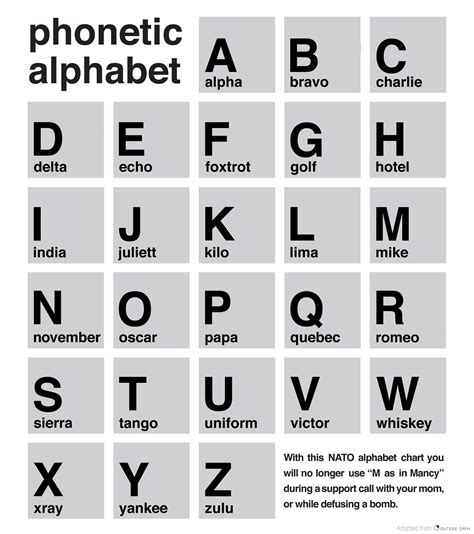
Using the NATO Phonetic Alphabet Code
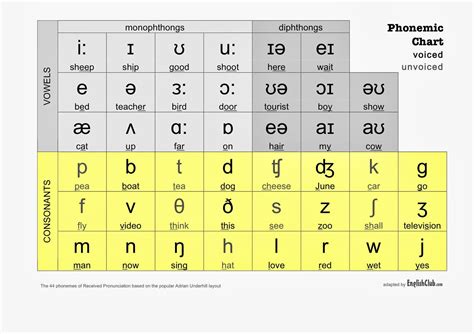
To use the NATO phonetic alphabet code, simply replace each letter with its corresponding phonetic word. For example, to spell out the word “example” using the phonetic alphabet code, you would say:
“E - Echo, X - X-ray, A - Alpha, M - Mike, P - Papa, L - Lima, E - Echo”
This ensures that the message is conveyed clearly and accurately.
Benefits of Using the NATO Phonetic Alphabet Code
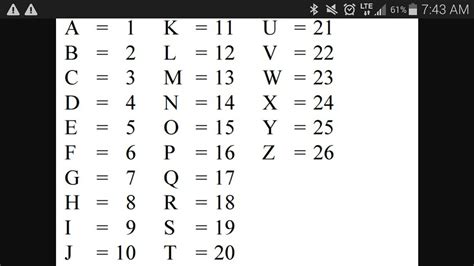
The NATO phonetic alphabet code offers several benefits, including:
- Improved Communication: The code ensures that messages are conveyed clearly and accurately, reducing the risk of errors or misinterpretation.
- Enhanced Safety: In critical situations, such as aviation or navigation, clear communication is vital for safety. The phonetic alphabet code helps prevent accidents caused by miscommunication.
- Increased Efficiency: The code saves time and reduces the risk of errors, making it an essential tool for various industries and situations.
📝 Note: The NATO phonetic alphabet code is widely used in various industries, including aviation, navigation, and international business. It's essential to familiarize yourself with the code to ensure clear and accurate communication.
Conclusion
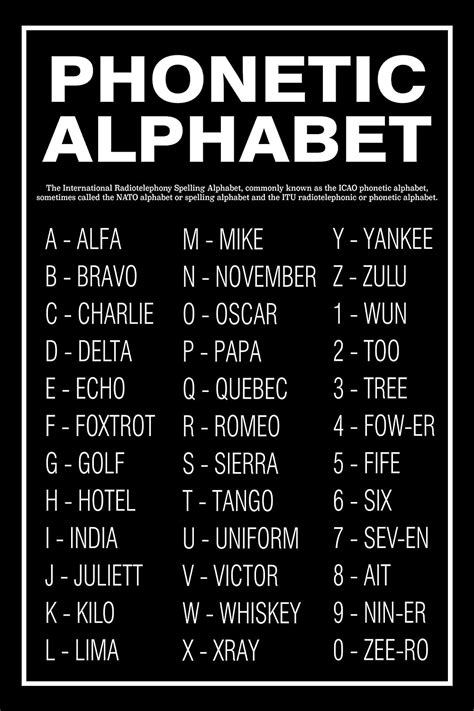
The NATO phonetic alphabet code is a valuable tool for ensuring clear and accurate communication in various situations. By understanding the code and using it correctly, you can avoid confusion, ensure accuracy, and enhance safety. Whether you’re a pilot, navigator, or business professional, the NATO phonetic alphabet code is an essential skill to have.
What is the NATO phonetic alphabet code?
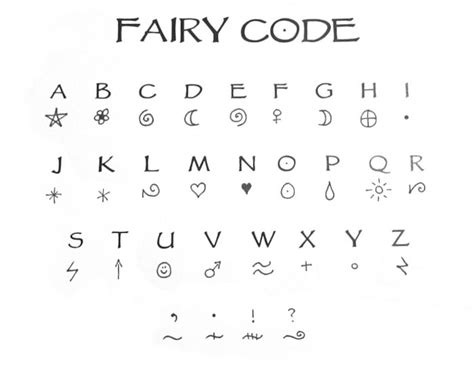
+
The NATO phonetic alphabet code is a system of words used to clearly communicate letters of the alphabet, especially in situations where standard letter pronunciation may be unclear.
Why is the NATO phonetic alphabet code important?
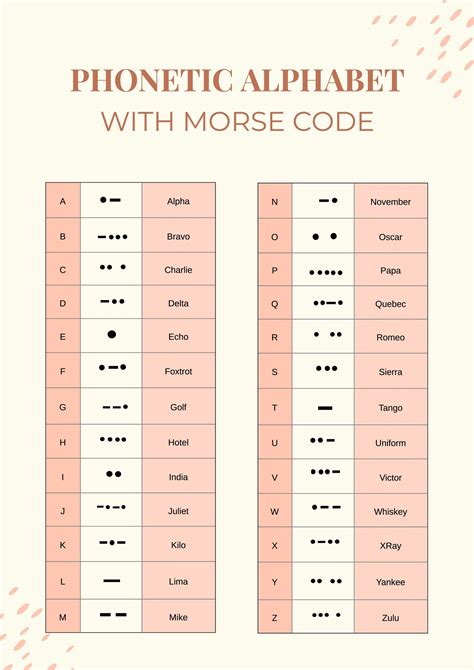
+
The NATO phonetic alphabet code is essential for ensuring clear and accurate communication in various industries and situations, including aviation, navigation, and international business.
How do I use the NATO phonetic alphabet code?
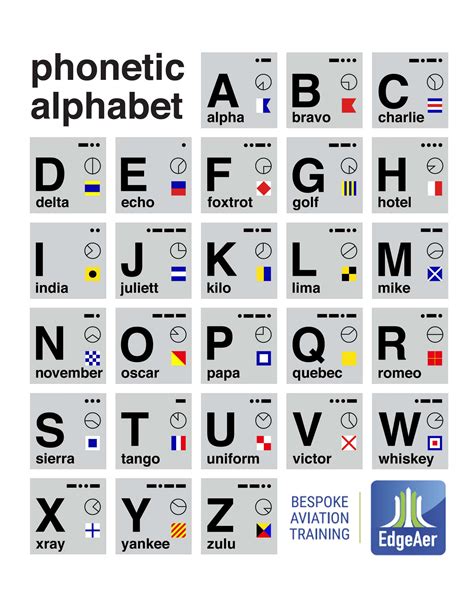
+
To use the NATO phonetic alphabet code, simply replace each letter with its corresponding phonetic word. For example, to spell out the word “example” using the phonetic alphabet code, you would say: “E - Echo, X - X-ray, A - Alpha, M - Mike, P - Papa, L - Lima, E - Echo”.
Related Terms:
- Nato phonetic alphabet translator
- Phonetic Alphabet English
- Phonetic Alphabet Indonesia
- International Phonetic Alphabet
- Alphabet code number
- Military phonetic alphabet

